#durham 1986
Text

Bride’s Magazine, 1986.
Model: Lisa Durham.
7 notes
·
View notes
Text
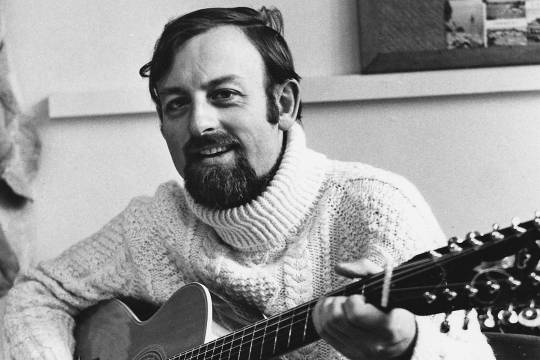
Although there was never any such phenomenon as Whittakermania, Roger Whittaker, who has died aged 87, built a huge international following in a career that spanned six decades. As the Boston Globe noted of his stage performances: “No one gets high. No one gets hysterical with excitement. And yet Roger Whittaker is one of the most popular entertainers in the world.”
Whittaker’s smooth baritone voice and songs of love, loss and yearning endeared him to audiences worldwide. His best known songs, where his voice was invariably accompanied by keening strings, included 1969’s Durham Town (the Leavin’), I Don’t Believe in If Anymore (1970), which reached No 8 in the UK, The Last Farewell (1971, reissued in 1975 to become a Top 20 hit in the US and a chart-topper in 11 countries), and Wind Beneath My Wings (1982).
He also had a trademark whistling ability, which he used to perform The Skye Boat Song in a duet with Des O’Connor, reaching the UK Top 10 in 1986.
Though he did not rack up chart hits as prolifically as the Beatles or Abba, his frequent TV and live appearances made him a household name in many countries. In the mid-1980s, he was acknowledged as Germany’s most successful recording artist. He made several recordings in German, singing the lyrics phonetically since he could not speak the language.
He was never fashionable, but never out of fashion with his audience. When he recorded a song such as Green, Green Grass of Home, it lacked the drama of Tom Jones’s version and his treatment of Song Sung Blue was homelier and more avuncular than Neil Diamond’s original, but it all became Whittaker music.
He liked to say he represented the “silent majority”. He defined this as “the kind of person who when he marries becomes a parent and a taxpayer and devotes himself to bringing up his children properly – all in all, a pretty straight-down-the-line guy”.
In the 70s, when rock music was dominating the record industry, Whittaker was dropped by his label, RCA, despite the fact that he had sold several million discs. He decided to market his 1977 album, All My Best, on TV. “I was the first act to go on TV with records,” he said. All My Best sold nearly 1m copies.
Born in Nairobi, Kenya, he was the son of Vi (nee Showan) and Edward Whittaker, who had owned a grocery shop in Staffordshire, but moved to a farm near Thika after Edward sustained serious injuries in a motorcycle accident and had been advised that a hot, dry climate would aid his recuperation.
Edward developed a new grocery business, while Vi worked as a teacher. Roger, who could speak Swahili before he learned English, attended the Prince of Wales school (now Nairobi school). He had begun learning the guitar at seven.
After school, where he had sung in the choir, he was called up for national service. He was posted to the Kenya Regiment, and for two years was involved in fighting the anti-colonial Mau Mau rebels. He subsequently attended the University of Cape Town to study medicine, but after 18 months he left and trained to be a teacher.
In 1959 he moved to Britain and enrolled at Bangor University in north Wales, where he studied zoology, biochemistry and marine biology. He also began to make his first moves into music, playing gigs to earn some cash and recording songs on flexi discs distributed with the university newspaper.
These provoked interest from Fontana records, and in 1962 his first single releases were The Charge of the Light Brigade and Steel Men.
He played concerts in Northern Ireland and appeared on the Ulster TV show This and That, and his career developed with constant touring around Britain.
“I learned how to entertain in the clubs of the north-east of England, the working men’s clubs where the miners go,” he said. In 1964 he married Natalie O’Brien.
By 1968 he was touring internationally and even had a TV showcase in the Soviet Union. At the 1968 Knokke song contest in Belgium, Whittaker performed If I Were a Rich Man, from the musical Fiddler on the Roof, and his own whistling composition, Mexican Whistler, helping Britain to win the competition, and both tunes were hits in France, the Netherlands and Belgium. In 1969 he scored his first UK Top 20 hit with Durham Town (the Leavin’), which reached No 12. Its easy-listening mixture of sentimentality and nostalgia, with its mournful references to war and bereavement, was typical of Whittaker’s work.
He revisited his African background in the documentary film Roger Whittaker in Kenya: A Musical Safari (1982), and in 1986 he published his autobiography (written with his wife), So Far, So Good. Three years later, he received the news that his parents had been attacked by a gang of robbers in Kenya, leaving his father dead and his mother brutally beaten. She subsequently moved back to Britain.
Outside music, Whittaker had a shrewd eye for antiques. His collection of paintings, furniture and works of art was auctioned by Sotheby’s in 1999 for more than £1m, at the same time as he sold his Herefordshire home and moved to Essex. Latterly he lived in the south of France.
He is survived by Natalie and by their five children, Emily, Lauren, Jessica, Guy and Alexander, 12 grandchildren, two great-grandchildren and his sister, Betty.
🔔 Roger Henry Brough Whittaker, singer and songwriter, born 22 March 1936; died 13 September 2023
Daily inspiration. Discover more photos at Just for Books…?
13 notes
·
View notes
Text
Cumpleaños 🎂
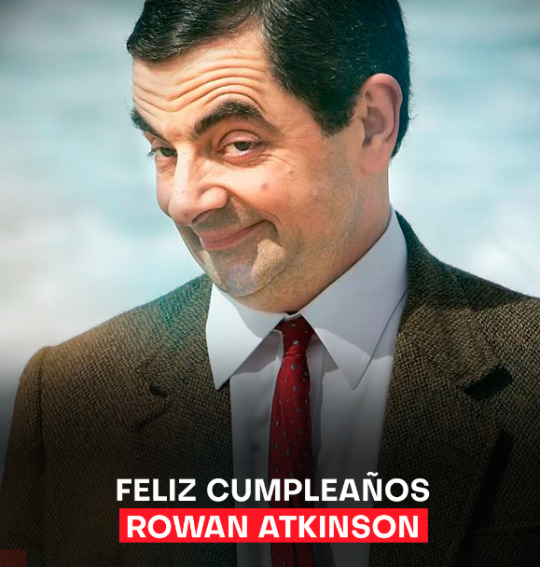
Feliz 69 aniversario Rowan Atkinson
Rowan Sebastian Atkinson (Consett, Durham, Inglaterra, 6 de enero de 1955) es un actor, comediante y escritor británico.
Interpretó los papeles principales en las comedias "Blackadder" (1983-1989) y "Mr. Bean" (1990-1995), y la serie de películas "Johnny English" (2003-2018).
Atkinson saltó a la fama por primera vez en el programa de comedia de sketches de la BBC Not the Nine O'Clock News (1979-1982), recibiendo el premio de televisión de la Academia Británica de 1981 a la mejor interpretación de entretenimiento, y The Secret Policeman's Ball (1979), donde interpretó un sketch.

Las parodias posteriores en el escenario han presentado actuaciones en solitario y colaboraciones.
El menor de cuatro hijos, sus padres eran Eric Atkinson, un granjero y consejero empresarial, y Ella May (de soltera Bainbridge), quienes se casaron el 29 de junio de 1945.3 Sus tres hermanos mayores son Paul, que murió cuando era un bebé, Rodney, economista y político euroescéptico que perdió por un estrecho margen el liderato del Partido de la Independencia del Reino Unido (UKIP) en 2000, y Rupert.
Atkinson fue criado como anglicano y estudió en la Durham Choristers School, St. Bees School, y en las universidades de Oxford y Newcastle, donde obtuvo el grado de Ingeniería Eléctrica, que completó posteriormente con un máster en el Queen's College de Oxford, la misma facultad de la que fue alumno su padre y de la que es Miembro Honorario desde 2006.
En 1983 escribió, en colaboración con el guionista Richard Curtis, la famosa comedia "La víbora negra"

Ha obtenido diversos premios, como el Emmy y el BAFTA por las categorías de programas televisivos de entretenimiento. Actuó en varias películas, como "Hot Shots 2", "Scooby Doo" y una de las secuelas de James Bond: "Nunca digas nunca jamás" (1983), y las diversas encarnaciones de la serie de televisión "La víbora negra" (1983), "Funny Business" (1992) y "Bean" (1997) le dieron el salto a la fama.

En 2001 formó parte de un reparto coral en "Ratas a la carrera", junto con John Cleese, Whoopi Goldberg y Cuba Gooding, Jr.
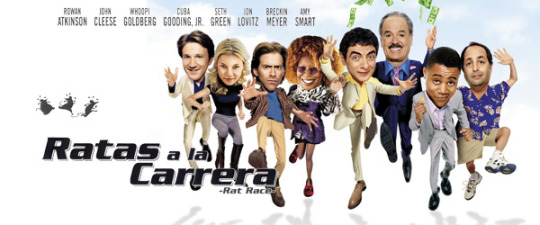
Es un apasionado de los coches deportivos. Ha sufrido dos accidentes de tráfico: en 2008 chocó contra otro automóvil y en 2011 se estrelló contra un árbol cuando conducía su McLaren F1 en Cambridgeshire.

En 2012, participó en la ceremonia de apertura de los Juegos Olímpicos de Londres.

En junio de 2015, Atkinson vendió el McLaren por 8 000 000 de libras, tras haber sido el único propietario, con un recorrido de 41 000 millas y dos accidentes.

En 2022 protagonizó la serie de "Man vs. Bee" para Netflix con 9 capítulos.

Y en 2023 protagonizó "Wonka" la nueva adaptación del chocolatero más famoso de la historia y compartirá protagonismo con Timothée Chalamet, Keegan-Michael Key y Sally Hawkins.

En 1990 se casó con la maquilladora de la BBC TV Sunetra Sastry (1957), de padre hindú y madre inglesa, a la que conoció mientras rodaba su serie "Black Adder" en 1986.

El 9 de septiembre de 1993 nació en Londres su hijo Benjamin Atkinson, que actualmente es militar, ya que estudió en la Real Academia Militar de Sandurst de Londres. Dos años después, en 1995, nacería su hija Lilly Atkinson, actualmente actriz y cantante de burlesque, que tras el divorcio de sus padres adoptó el apellido de su madre, pasándose a llamar Lilly Sastry.
Actualmente es pareja de la actriz Louise Ford (nacida en noviembre de 1984), tras separarse de Sunetra Sastry en 2014. Tiene una hija con Ford, nacida a principios de diciembre de 2017 y llamada Isla Atkinson.

6 notes
·
View notes
Photo
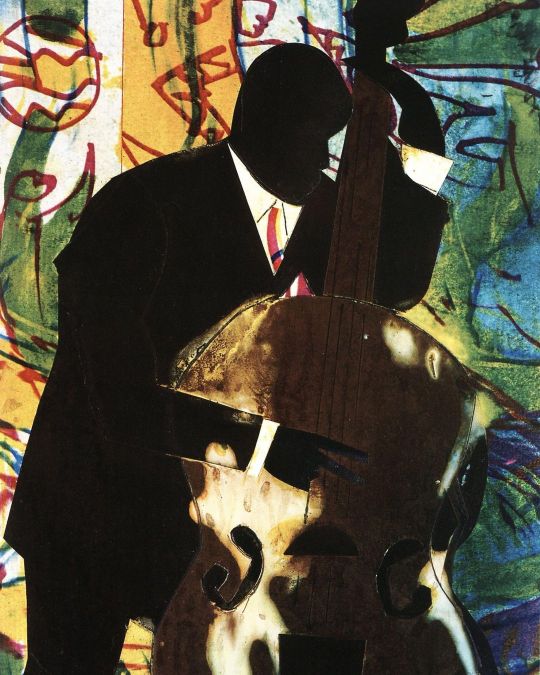
Hall of Fame basketball player Grant Hill has a significant collection of African American art, focusing on Elizabeth Catlett and Romare Bearden. These images are from the catalog of an exhibition of 46 works from his collection: 𝐒𝐨𝐦𝐞𝐭𝐡𝐢𝐧𝐠 𝐀𝐥𝐥 𝐎𝐮𝐫 𝐎𝐰𝐧: 𝐓𝐡𝐞 𝐆𝐫𝐚𝐧𝐭 𝐇𝐢𝐥𝐥 𝐂𝐨𝐥𝐥𝐞𝐜𝐭𝐢𝐨𝐧 𝐨𝐟 𝐀𝐟𝐫𝐢𝐜𝐚𝐧 𝐀𝐦𝐞𝐫𝐢𝐜𝐚𝐧 𝐀𝐫𝐭 (Durham, NC, 2003). Image 1: 𝑻𝒊𝒎𝒆 𝒇𝒐𝒓 𝒕𝒉𝒆 𝑩𝒂𝒔𝒔, Romare Bearden, 1979 Image 2: 𝑪𝒂𝒓𝒕𝒂𝒔, Elizabeth Catlett, 1986 Image 3: 𝑯𝒐𝒖𝒔𝒆, Romare Bearden, 1970 Image 4: 𝑷𝒍𝒂𝒚𝒎𝒂𝒕𝒆𝒔, 𝒇𝒓𝒐𝒎 𝒕𝒉𝒆 𝒔𝒆𝒓𝒊𝒆𝒔 𝑭𝒐𝒓 𝑴𝒚 𝑷𝒆𝒐𝒑𝒍𝒆, Elizabeth Catlett, 1992 #Blackart #Blackartists #Blackhistorymonth #library #books #bookstagram #booksofinstagram #librarybooks #librarybooks #romarebearden #elizabethcatlett (at Harvard Yard) https://www.instagram.com/p/Co-qQGPuO4M/?igshid=NGJjMDIxMWI=
#blackart#blackartists#blackhistorymonth#library#books#bookstagram#booksofinstagram#librarybooks#romarebearden#elizabethcatlett
35 notes
·
View notes
Text

This Friday (April 12th, 2024) night at the Carolina Theatre of Durham, a retro film series double feature:
Tony Scott’s Top Gun (1986)
John Milius’ Red Dawn (1984)
$12.00 [plus tax] to get in, movies start at 7(-ish).
“Along with the City of Durham, we have made major investments in the Carolina Theatre for the comfort and safety of our guests during our closure,” says Randy McKay, the Carolina Theatre’s President & CEO. “That includes tens of thousands of dollars in new state of the art HVAC upgrades from Global Plasma Solutions (GPS) that remove biohazards, pollen, and other contaminants to make our air as pure — and sometimes purer — than outdoor air.” The theater has also earned a Global Biorisk Advisory Council® (GBAC) STAR™ accreditation for its cleaning practices to ensure that guests have a safe and enjoyable experience. “Together, these cleaning practices and advanced air filtration make the Carolina Theatre one of the safest spaces to attend a film or live event in the region,” says McKay. [source]
Carolina Theatre of Durham
309 W. Morgan St., Durham, NC
http://www.carolinatheatre.org/
3 notes
·
View notes
Text
youtube
I was amazed (long back) to see this video. I didn't know Andy Williams sang a version (with them!) as well.
This song itself is fascinating as well. I took time (as I often do - ha ha), to read through and research the lyrics.
Apparently, these are two separate folk songs that Simon and Garfunkel put together. Scarborough Fair and Canticle.
---
Extracts from Wikipedia:
The song lists a number of impossible tasks given to a former lover who lives in Scarborough, North Yorkshire.
The famous melody was collected from Mark Anderson (1874–1953), a retired lead miner from Middleton-in-Teesdale, County Durham, England, by Ewan MacColl in 1947.
… the 1960s folk rock duo Simon & Garfunkel, who learned it from Martin Carthy.
The lyrics of Scarborough Fair appear to have something in common with a Scottish ballad titled "The Elfin Knight", collected by Francis James Child as Child Ballad #2, which has been traced as far back as 1670. [An elf threatens to abduct a young woman to be his lover unless she can perform an impossible task.]
---
Lyrics
Open Text = Scarborough Fair
(Text in Parenthesis) = Canticle
.
Are you going to Scarborough Fair?
Parsley, sage, rosemary and thyme
Remember me to one who lives there
She once was a true love of mine
Tell her to make me a cambric shirt (deep forest green)
Parsley, sage, rosemary and thyme
(Tracing a sparrow on snow-crested ground)
Without no seams nor needlework
(Blankets and bedclothes a child of the mountains)
Then she'll be a true love of mine
(Sleeps unaware of the clarion call)
Tell her to find me an acre of land
(On the side of a hill, a sprinkling of leaves)
Parsley, sage, rosemary, and thyme
(Washed is the ground with so many tears)
Between the salt water and the sea strand
(A soldier cleans and polishes a gun)
Then she'll be a true love of mine
.
Tell her to reap it in a sickle of leather
(Blazing in scarlet battalions)
Parsley, sage, rosemary and thyme
(Generals order their soldiers to kill)
And to gather it all in a bunch of heather
(And to fight for a cause they've long ago forgotten)
Then she'll be a true love of mine
.
Are you going to Scarborough Fair?
Parsley, sage, rosemary and thyme
Remember me to one who lives there
She once was a true love of mine
---
List of Recordings (is staggering)
Field recordings
1939. Georgia Ann Griffin of Newberry, Alachua, Florida. Recorded by John Lomax
1958. Allie Long Parker of Hogscald Hollow, Eureka Springs, Arkansas. Recorded by Mary Parler
1966. Sara Cleveland of Brant Lake, New York. Recorded by Sandy Paton
1976. Elizabeth "Liz" Jefferies. Recorded in Bristol by Barry and Chris Morgan
Commercial recordings
1955. Actor/singers Gordon Heath and Lee Payant (album Encores from the Abbaye)
1956. A. L. Lloyd and Ewan MacColl, using Kidson's melody (album The English and Scottish Popular Ballads vol IV)
1947. Mark Anderson (retired lead miner, who sang to Ewan MacColl) - this melody was used by Simon & Garfunkel in "Scarborough Fair/Canticle".
1956. Audrey Coppard (album English Folk Songs)
1957. Ewan MacColl and Peggy Seeger's LP Matching Songs of the British Isles and America
1960. Ewan MacColl and Peggy Seeger's album The Singing Island
1965. Martin Carthy (eponymous debut album) inspired by Ewan and Peggy's songbook
1966. Marianne Faithfull (album North Country Maid)
1967. Ewan MacColl and Peggy Seeger's a capella version on The Long Harvest
1968. Sergio Mendes & Brasil 66
1969. Vicky Leandros (several versions - English, German, French, and Greek)
1989. The Stone Roses (their own words to the melody for "Elizabeth My Dear")
2007. Celtic Woman (album A New Journey)
2009. My Dying Bride (EP Bring Me Victory)
2012. Nox Arcana (album Winter's Majesty)
2003. Queensryche (remastered version of album Empire, though recorded in 1986)
2020. Dan Avidan and group Super Guitar Bros
---
#Youtube#Scarborough#Scarborough Fair#Canticle#Mark Anderson#Ewan MacColl#Martin Carthy#Francis James Child#Paul Simon#Art Garfunkel#Simon and Garfunkel#folk songs#folk music#music
2 notes
·
View notes
Text

Pride Pictures will aim to bring queer cinema to North American audiences with no language or regional barriers. The company’s launch comes as representation for LGBTQ+ communities is increasing, but the challenge of getting indie queer films into theaters and onto streaming platforms grows.
“There’s a lot of wonderful films made by amazing queer filmmakers from around the world that never get seen by North American audiences other than in festivals, and I’m excited to help some of these films find the audiences they deserve. I really feel that we need to bring light to these amazing films by amazing filmmakers that are underrepresented in the filmmaking community,” Federgreen said in a statement.
Cooper will head up acquisitions at Pride Pictures after serving as director of programming at Durham Film Festival for five years, a producer on the documentary feature and Mexican-Canadian co-production El Gran Salto and working as a festival manager at genre film distributor Raven Banner Entertainment.
“Given the climate that we are in, films can play an important role in education as well as entertaining many,” Cooper added in his own statement.
The Finnish feature Light Light Light from director Inari Niemi, being introduced to international buyers at EFM by Intramovies, is set in the spring of 1986 when, amid the Chernobyl nuclear explosion, Mimi, a young woman, in a small Finnish village fills the life of 15-year-old Mariia with radiating light. Twenty years later, Mariia returns home to take care of her sick mother and memories of that meaningful summer start to surface.
Rhys Howard’s Eudaimonia stars Alexandra Dawkins as Prudence, a young artist with telepathic abilities searching for connection and meaning in a world of her own eccentric design.
Pride Pictures plans a summer 2024 release for Light, Light, Light and Eudaimonia.
4 notes
·
View notes
Text
Throwback Thursday (Friday edition) #51!- Dumptruck- Terminal (2000- Devil in the Woods)

I suppose for this TT (special Friday edition) i could have written about any of the Dumptruck records. 1986’s Positively was my introduction to the band (then i went back and listened to their fine debut, D is for Dumptruck) and the 1987’s For the Country was a truly beautiful record and my favorite of their 80’s run.
You didn’t hear much from the band in the 90’s (only 1995’s Days of Fear) and then in 2000, the D.I.T.W. label released the terrific Terminal. By this point, co-leader Kirk Swan had left the band (though he does guest on this record) and vocalist /guitarist Seth Tiven, who had by now moved to Austin, TX, took over the main songwriting role.
The record opens with four fantastic songs in the wired/wiry opener “Forever,” the title track (to which Swan adds harmony vocals), “Long Ride” (with Ian McLagan on Hammond organ…he’s on a few other songs on this record as well) and the moody/hooky “One Foot Out The Door.” The rhythm section of George Duron on drums and Jeff Farris on bass are pure powerhouse and other guitarist Alan Durham adds tasty licks as well.
Elsewhere, “Daylight Falls” is moodier/prettier, but still packs a righteous punch while “Entertainment” has more of those great snakey, guitar lines, and “Evening of Fun” is a swaying waltz (with McLagan on organ again, and Jimmy Ryan on mandolin).
If you’ve missed this the first time around it’s definitely worth your time and if it’s an old fave, well, give it a spin today! (and don’t miss their most recent record, 2018’s Wrecked).
***you can find on Discogs

2 notes
·
View notes
Text

Allan Troxler: Shirley's Garden by David Cecelski. "Listening to History," News & Observer. Published 10/11/1998 and reprinted with permission here
I talked with Allan Troxler in the garden behind the Blevins House, a group residence in Durham for people with HIV/AIDS. A 51-year-old Greensboro native, Troxler started this bountiful garden eight years ago to provide produce and cut flowers for the residents and their caregivers. We walked down dense rows of sunflowers and okra, beneath 7-foot-high trellises of tomatoes and cucumber, alongside lush patches of watermelon and cantaloupe. Troxler has been a volunteer at Blevins House since it was founded 10 years ago by a group of his friends, organized as the AIDS Community Residence Association. Many of his closest friends have died during the AIDS epidemic, including his own long-time partner, Carl Wittman, in 1986. Like so many other Tar Heel volunteers and families, he has responded to the AIDS epidemic by quietly taking care of the small things that one person can do for another to make life more bearable, more decent. He nurses the ill, makes endearing keepsakes - and tends this garden.
He began by telling me the story of the person who inspired him to start the garden:
Allan Troxler: Shirley was an old mountain woman. I think she might have gotten HIV from prostitution. When she came to the house, which is a very pleasant, middle-class ranch home, she just sat on the edge of the sofa for about a month. Like she was just waiting for the Greyhound to take her back to the hills - she was so ill at ease in what to her was this palatial home. I suspect she had only lived in little cabins and trailers. But she took to lining the porch with coffee cans full of houseplants. She was turning it into home.
Shirley was real deadpan. When she was joking, you couldn't tell because she wouldn't smile, but then you'd see that her eyes were flashing. Didn't have many teeth. She dipped snuff and had a snuff can. Most all of her hair was gone. I had no idea how old she was. She looked ancient, but I remember at some point seeing her age and I was surprised at how much younger she was than I thought. We all knew that Shirley loved plants. Her birthday was on May the first, and so everybody gave her houseplants. I gave her a few seed packets. That's how the garden got started. The first year the garden was just a little patch with some zinnias and a few other things. Shirley would sit up on the porch - she didn't have any energy to work in the yard - and she'd boss me around. The residence is housing of last resort. It's for people who can't find anywhere else to live. Anyway, that first year the garden was for Shirley. And I planted her zinnias, because they were so colorful.
She probably came here through the HIV/AIDS clinic at Duke. They refer most of the residents to the house. At that point - 1989 - there probably weren't adequate services up there in the mountains for her. Blevins House, and several other residences in the area, are pretty cosmopolitan. Often times it's people from all over the state.
Shirley took great pride in the garden. By fall, we had all kinds of beautiful things in bloom. In October, we planned an excursion to the State Fair with Shirley and other folks from the house. It was the first time she had ever been to anything like the State Fair. She was tremendously excited. We got Shirley over there in a wheelchair, all made up, in her bouffant wig. Along with J.R. and Tony, who was Lumbee.
So we've been there maybe 10 minutes. We're right in front of the turkey shoot on the midway. The rifles all go off. Straightaway, Shirley goes into a grand mal seizure, which I had never dealt with at all. It was terrifying. She went white and rigid. Fortunately, Tony had had seizures as a complication from AIDS. He had a sense of what to do.
We wheeled Shirley over to the Red Cross booth. It ended up I had to bring her back out here. As she was coming to, about when we were back to Durham, she said: "Where are we? How come we're not at the State Fair?" And I said: "Shirley, you had a seizure. I got to take you home." She was just furious, because she had been looking forward to this for weeks. I was feeling really bad, thinking, 'God, what can we do for Shirley?'
The next morning, I came out to the garden, and there were these coxcombs, which are great big flowers - deep, deep pink and red - that look like rooster's combs. They'd been off in a corner and once or twice I had dumped Miracle Gro on them and otherwise I had ignored them. So I thought, well, there's another round of the flower competition at the fair. I'll take these coxcombs over.
A couple days later, a friend and I went by the flower show, and there were the coxcombs covered with ribbons. First prize! Best of show! These huge, apricot-colored ribbons with three or four tiers of ruffles. It was perfect. So I bought Shirley a State Fair sweatshirt and we pinned on all the ribbons and brought it back to her. She was tickled. It wasn't all the same as being there, but it was next best. She died that next spring.
Shirley, Ken, now Roosevelt - those are the three faces that the garden has most assumed for me. Ken loved the garden. He had grown up at an orphanage at Chalybeate Springs. They made the kids do field work - I think it was a strawberry farm - so he had this almost instinctive relationship with the garden. He was here for a couple years. Early on, it was rare that anybody was here for that long. It's changed now. With these new drugs and drug combinations, people are living a lot longer.
Last fall, Roosevelt started coming out and puttering around, chopping weeds, clearing beds. Now he's gaunt and doesn't have much energy. He's on oxygen 24 hours a day, but he has a portable tank so he can come preside. I tell him he's our patron saint. So many people, once they're diagnosed, give up. He has no patience with that. He's from Durham, but he worked in New York, polishing diamonds at Tiffany's.
Especially in those early years, I think the benefits of volunteerism were at least as much for the volunteers as for the people who lived here. We all needed reassurance. We all needed some sense of, well, there is something I can do. Everybody felt defeated. I think all of us were searching for a way to understand this very natural process, this epidemic, as something other than this terrible judgment, this holocaust, this tragedy. I've hoped that here, in the garden, is some solace in the cycles of life, death, and then regeneration.
And maybe to have a vase of zinnias or a sack of okra matters in a small way.
#aids#aids epidemic#field notes#gay history#lgbt#im on a bit of a 'old activism reading' kick and allan troxler was one of the founders of rfd#which i am currently reading issue-to-issue#long post#allan troxler
24 notes
·
View notes
Photo

Durham Castle is a Norman castle in the city of Durham, England, which has been occupied since 1837 by University College, Durham after its previous role as the residence of the Bishops of Durham. Designated since 1986 as a cultural World Heritage Site in England, along with Durham Cathedral, the facility is open to the general public to visit, but only through guided tours, since it is in use as a working building and is home to over 100 students. The castle stands on top of a hill above the River Wear on Durham's peninsula, opposite Durham Cathedral.
8 notes
·
View notes
Text
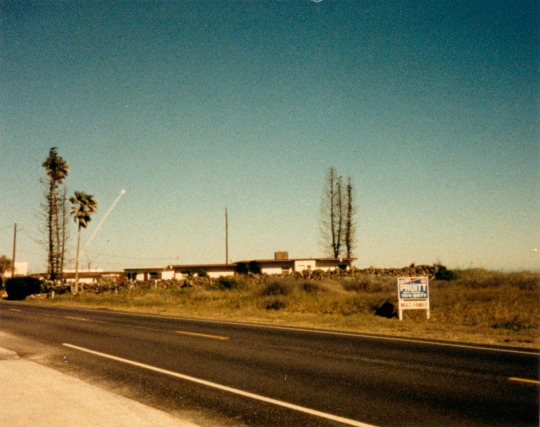




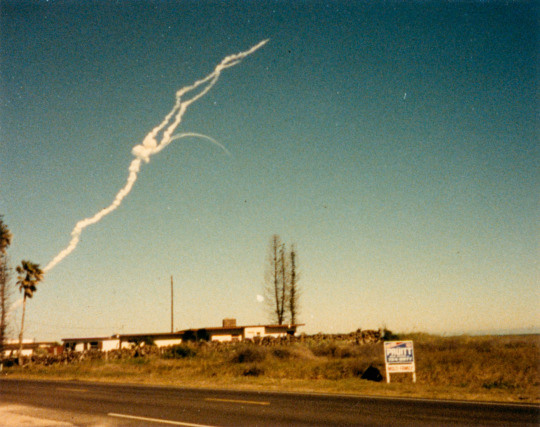


January 28, 1986
My grandparents lived in Melbourne Beach, FL, in a condo on A1A. The morning of the last Challenger launch, my grandmother decided to take her new Kodak Disc camera outside to capture some photos of the launch. My grandfather decided to stay inside and watch it on TV.
Grandma (we called her "Hunkie" - which is another story altogether) went out and got the shots, then came back into the condo and said to Grandpa ("Papa"):
"F.M. - I got pictures of the launch, but something didn't look right."
Papa replied, "Well I guess not - it just blew all to hell!"
---
To this day, these are the eeriest photos I know of the Challenger disaster. Perhaps it's because of the personal connection.
These photos are 37 years old, from a low-end consumer camera. They're grainy, they're not very well color balanced (probably due to the age), but they are nonetheless striking. Just a casual observer, taking photos of a launch happening miles and miles to her north.
all photos ©1986 Jacqueline S. Durham (RIP)
2 notes
·
View notes
Text
Cumpleaños 🎂

Mark Wahlberg mantiene con 52 años sus espectaculares músculos
El estadounidense es un hombre muy dedicado a cuidar el cuerpo y para ello madruga todos los días y entrena con pasión. No obstante, en el año 2022 tuvo que cambiar de manera profunda su físico para rodar 'El milagro del padre Stu', ya que debía interpretar a un boxeador tanto en su época de competición como tras varios años afectado por una lesión. Entonces amplió su dieta de calorías, engordó y cumplió con lo esperado engordando varios kilogramos, pero apenas ha pasado un año y ya ha logrado volver a sus marcados abdominales y fuertes músculos.
El actor se levanta a las 2,30 de la mañana y realiza dos entrenamientos diarios, acompañados de una gran ingesta de calorías
Tras tomar un primer desayuno donde no falta la avena, los huevos, la crema de cacahuete y los arándanos, el actor realiza un primer entrenamiento . Sí, sobre las 3,30 de la madrugada se encamina al gimnasio y allí, junto a su entrenador personal , realiza una primera rutina. Después, se toma otro desayuno a base de de batido de proteínas y tres hamburguesas de pavo.
Sobre las 7,30 de la mañana, hora habitual de muchos para levantarse, Mark Wahlberg se va a jugar al golf , porque, además de entrenar en el gimnasio, al actor le gusta mantenerse activo practicando este deporte y otras actividades. A las 10,30 de la mañana se toma su tercer desayuno que se es una ensalada con lechuga, pepino, tomate, aguacate, aceitunas, pollo a la parrilla y huevos duros. A las 13 h come y a las 15,30h vuelve a tomar otro tentempié, justo antes de su segundo entrenamiento en el gimnasio. A las 17,30h toma la cena a base de pescado y verduras. Y sobre las 20h se va a dormir para poder levantarse seis horas después.

Mark Robert Michael Wahlberg (Boston, Massachusetts, 5 de junio de 1971) es un actor, modelo, cantante y productor de televisión estadounidense. Como cantante, integró el grupo de rap Marky Mark & the Funky Bunch, que alcanzó un enorme éxito con el disco Music for the People. Como actor, fue nominado a los Oscar 2006 en la categoría de mejor actor de reparto por la película "The Departed".
Es hermano del también actor y músico Donnie Wahlberg. Recibió una estrella en el paseo de la fama de Hollywood el 29 de julio de 2010.
Es el más joven de nueve hermanos
Wahlberg se casó con la modelo Rhea Durham, el 1 de agosto de 2009, en Beverly Hills, cerca de donde ellos viven. El matrimonio tiene cuatro hijos, dos niñas: Ella Rae (n. 2003) y Grace Margaret (n. 2010) y dos niños: Michael (n. 2006) y Brendan Joseph (b. 2008).
Wahlberg es un ferviente católico; va todos los días a la iglesia a orar y asiste con su familia a misa todas las semanas.

En junio de 1986, Wahlberg, que entonces tenía 15 años, y tres amigos persiguieron a tres niños afroamericanos mientras gritaban “Kill the nigger, kill the nigger" y les lanzaban piedras. Al día siguiente, Wahlberg y otros persiguieron a un grupo de escolares que estaban realizando una excursión en la playa, y les gritaron insultos, lanzaron rocas y llamaron a otros chicos para que se unieran en el acoso. En agosto de 1986, se interpuso una demanda civil contra Wahlberg por violar los derechos civiles de sus víctimas, el caso llegó a resolución el mes siguiente.
Otro incidente racial ocurrió en abril de 1988, cuando Wahlberg de 17 años y drogado con fenciclidina, atacó a un vietnamita de mediana edad en la calle, llamándole “vietnamita de mierda” y golpeándolo con un pedazo grande de madera hasta dejarlo inconsciente. Más tarde, ese mismo día, Wahlberg atacó a otro vietnamita, golpeándolo en el ojo. Cuando Wahlberg fue arrestado y trasladado a la escena del crimen, les dijo a los policías: “Ese es hijo de puta al que le abrí la cabeza”. Los investigadores también afirmaron que Wahlberg realizó "numerosos insultos raciales como ‘gooks’ o ‘slant-eyed gooks’”.

Wahlberg fue acusado de tentativa de homicidio, afirmó ser culpable de agresión y fue finalmente condenado a 2 años de cárcel, aunque solo cumplió 45 días de su sentencia. Wahlberg creía que había dejado a la segunda víctima (llamada Johnny Trinh) permanentemente ciego de un ojo, aunque Trinh declaró que había perdido el ojo en la Guerra de Vietnam, mientras servía en el ejército vietnamita del sur, que luchaban junto a las tropas estadounidenses.
En agosto de 1992, Wahlberg le rompió la mandíbula a un vecino suyo en un ataque. Los documentos del tribunal afirman que en 1992, Wahlberg "sin provocación ni causa alguna, pateó vilmente y repetidamente" a un hombre en la cara mientras otro hombre sostenía a la víctima en el suelo. Los documentos del tribunal afirman que en 1992, Wahlberg "sin provocación ni causa alguna, pateó cruel y repetidamente" a Crehan en la cara mientras otro hombre, Derek McCall, sostenía a la víctima en el suelo. El abogado de Wahlberg afirmó que Wahlberg y McCall, que es negro, fueron provocados después de que Crehan calificara a McCall de insulto racial.

En 2006 Wahlberg dijo que lo correcto sería que hablase cara a cara con Trinh, el vietnamés a quien golpeó en el ojo, para hacer las paces, ya que no lo había hecho. En 2016 mientras solicitaba un indulto por su condena de asalto a Trinh, Wahlberg dijo haber hablado con Trinh y haberse disculpado por “sus horribles actos”. Trinh anunció públicamente haberle perdonado.
En 2014 Wahlberg solicitó el indulto por sus condenas. Su petición de indulto creó controversia.
5 notes
·
View notes
Text
Exploring The Differences Between The 4% And 9% LIHTC Programs: A Focus On Affordable And Multifamily Housing

Affordable housing is a pressing issue across the United States, and the Low-Income Housing Tax Credit (LIHTC) program plays a significant role in addressing this concern. Within the LIHTC program, there are two primary credit rates: the 4% and 9% LIHTC programs. These rates have a substantial impact on the development of affordable and multifamily housing. In this comprehensive blog post, we'll delve into the key differences between the 4% and 9% LIHTC programs, their financial implications, and their relevance in North Carolina.
The Low-Income Housing Tax Credit (LIHTC) Program
Before we explore the differences, let's briefly understand what the LIHTC program entails. The LIHTC program, established in 1986, is a federal initiative designed to incentivize the private sector to invest in the development of affordable rental housing for low-income households. It provides tax credits to developers and investors, effectively reducing the cost of financing these projects. By doing so, it encourages the creation and preservation of affordable housing units.
Financial Implications: 4% vs. 9% LIHTC Programs
The fundamental difference between the 4% and 9% LIHTC programs lies in the amount of tax credits allocated to eligible projects. Here's an overview of the financial implications of both programs:
1. 4% LIHTC Program
The 4% LIHTC program provides a fixed tax credit rate of approximately 4% for the acquisition and development of affordable housing projects.
This rate typically results in lower equity generated from the tax credits, requiring developers to seek additional financing sources.
Projects financed under the 4% program are often coupled with tax-exempt bonds to bridge the financial gap.
These projects tend to be more suitable for larger multifamily housing developments where the gap can be met with the use of bonds.
2. 9% LIHTC Program
The 9% LIHTC program offers a higher tax credit rate of approximately 9%, making it a more lucrative option for developers.
With a higher credit rate, developers can generate more equity from the tax credits, reducing the need for additional financing sources.
Projects under the 9% program are typically financially more feasible and may not require tax-exempt bonds.
This program is often preferred for smaller, standalone, affordable housing projects.
Money Circulation: Nationwide and in North Carolina
The LIHTC program plays a crucial role in providing affordable housing nationwide. According to the National Council of State Housing Agencies (NCSHA), in 2021, an estimated $15.1 billion in tax credits was allocated for affordable housing across the United States. This substantial amount reflects the program's significance in addressing the affordable housing crisis.
Now, let's narrow our focus to North Carolina and explore the state's utilization of the LIHTC program:
1. North Carolina's LIHTC Allocations
North Carolina receives an annual allocation of LIHTC credits, with the exact amount determined by population and federal guidelines.
In recent years, North Carolina has been allocated tens of millions of dollars in tax credits to support affordable housing development.
2. Relevance in North Carolina
Affordable housing is a critical issue in North Carolina, with various cities facing housing challenges.
Cities like Charlotte, Raleigh, and Durham have been recipients of significant LIHTC allocations due to their growing populations and affordable housing needs.
Developers in North Carolina leverage both the 4% and 9% LIHTC programs to address the diverse housing needs of different communities.
3. Cities with the Most Tax Credits
In North Carolina, cities such as Charlotte and Raleigh have consistently received a substantial share of LIHTC allocations.
These cities are hubs of economic activity and attract a growing population, leading to increased demand for affordable housing.
Comparative Analysis: 4% vs. 9% LIHTC Programs in North Carolina
To better understand the relevance of the 4% and 9% LIHTC programs in North Carolina, let's conduct a comparative analysis:
1. Larger Projects vs. Smaller Projects
In metropolitan areas like Charlotte and Raleigh, where more significant multifamily housing developments are common, the 4% LIHTC program may be more relevant.
Smaller communities and rural areas might find the 9% program more suitable for standalone affordable housing projects.
2. Funding Availability
The 9% program's higher credit rate provides more funding flexibility, which can be advantageous for smaller communities where securing additional financing sources may be challenging.
3. Local Housing Needs
The choice between the 4% and 9% programs should align with the specific housing needs of each city or community within North Carolina.
Cities experiencing rapid growth and urbanization may prioritize larger developments, while smaller towns may focus on single, affordable housing units.
Conclusion
The 4% and 9% LIHTC programs play vital roles in addressing the affordable housing crisis in North Carolina and nationwide. While the 4% program is ideal for more significant multifamily housing developments, the 9% program offers more flexibility for smaller projects.
In North Carolina, cities like Charlotte and Raleigh continue to receive substantial LIHTC allocations, reflecting the pressing need for affordable housing in these growing urban centers. Developers and policymakers alike must carefully consider the specific housing needs of each community to determine which LIHTC program best aligns with their goals.
Ultimately, the LIHTC program, in all its variations, remains a crucial tool in the effort to create vibrant, inclusive communities and provide affordable housing options for low-income households across North Carolina and the United States.
For more detailed information and personalized recommendations, visit Midtown Builders to enhance your journey in the exquisite world of wine and food pairing.
Read the full article
1 note
·
View note
Text

This Friday (November 10th, 2023) night at the Carolina Theatre of Durham, a retro film series extraterrestrial double feature:
David Lynch’s Blue Velvet (1986)
Jonathan Demme’s Silence of the Lambs (1991)
$12.00 [plus tax] to get in, movies start at 7(-ish).
“Along with the City of Durham, we have made major investments in the Carolina Theatre for the comfort and safety of our guests during our closure,” says Randy McKay, the Carolina Theatre’s President & CEO. “That includes tens of thousands of dollars in new state of the art HVAC upgrades from Global Plasma Solutions (GPS) that remove biohazards, pollen, and other contaminants to make our air as pure — and sometimes purer — than outdoor air.” The theater has also earned a Global Biorisk Advisory Council® (GBAC) STAR™ accreditation for its cleaning practices to ensure that guests have a safe and enjoyable experience. “Together, these cleaning practices and advanced air filtration make the Carolina Theatre one of the safest spaces to attend a film or live event in the region,” says McKay. [source]
Carolina Theatre of Durham
309 W. Morgan St., Durham, NC
http://www.carolinatheatre.org/
#Blue Velvet#Silence of the Lambs#Retro Film Series#Carolina Theatre#Carolina Theatre of Durham#CToD#Durham#NC
5 notes
·
View notes
Text
Land of a thousand cockroaches : 1986-1987 : Deptford Housing Co-operative, London
“Gimme your money!” he shouted, pointing a pistol at me. He had jumped out from behind some bushes. It was a dark winter evening. I was alone. Nobody was about. I was ten metres from the entrance to New Cross railway station, about to return home, having walked my girlfriend to her train after an evening together. Street lighting beyond the railway was abysmal. I jumped with surprise. It was my first mugging. It was my first year living in London. I was aware of the advice: hand over your wallet and do not argue. I knew the fate of Thomas Wayne.
Except that I had no wallet to give. I had a five-pound note in the left pocket of my black Levi 501’s and some loose change. That was it. No credit cards. In London, I knew to carry as little as possible. I had not carried a wallet since an embarrassing incident in 1978 when I had parked my little yellow Datsun at the end of Upper Gordon Road, opposite Elmhurst Ballet school, and walked into the town centre. Within the hour, I returned to the car and drove home, only to receive a phone call from Camberley police station. Somebody had picked up my wallet from the gutter and handed it in. It must have fallen from the side pocket of my jacket as I stooped to enter the car. I had no idea it was missing. I collected the wallet and found it intact. I have never forgotten that anonymous ‘good Samaritan’. After that, I gave up carrying a wallet.
Later that same year, I had robbed myself through carelessness as a twenty-year old student union vice-president. Following an extensive survey of the photocopier market, having used such machines since the 1960’s, I decided that the Rank Xerox 3600 was the most modern and robust to rent and install on the mezzanine level of the student building in Durham. Once the company’s technicians had set it up and departed, I was so keen to test it that I wanted to make the first copy. However, I had not been carrying any papers so I reached into my pocket and pulled out the only banknote I had. It was £50 because, in the pre-debit card era, I would withdraw £100 monthly from Lloyds Bank’s cash machine opposite Dunelm House. I put the note on the platen, pressed the button and out came a perfect monochrome copy which I then rushed off to let my peers admire. Minutes later, I realised I had left the £50 note in the machine and returned to find it … gone. The copier’s first student user must have been delighted!
Now, accosted in the shadow of South London 24-storey high-rises, within seconds I had to decide how to react. I had no wallet. If I were to offer my meagre five-pound note, this highwayman might become angry and violent. It was never a good idea to argue with a man pointing a gun at you. I stared at my mugger, his face mostly hidden by a blue bandana. He was barely five feet tall. Was he even an adult? 1981’s ‘Stand and Deliver’ music video flickered in my head (no relation). I recalled childhood streets that encompassed Gibbet Lane where, times past, robbers like him on the main road to London had been hanged. I took the rash decision to simply turn and walk away … briskly. I might be shot in the back. I might be attacked from behind. My heart was beating so fast but I knew not to break into a run. And, incredibly luckily, nothing at all happened.
Home was five minutes’ walk away. On the payphone inside the front door, I immediately called 999 to report the incident. While I was sat waiting in the kitchen for a police officer to arrive and take my statement, one of my female co-tenants arrived. I explained breathlessly what had just happened. She quietly recounted that she had suffered the same experience in precisely the same place, a few days previously, and had been relieved of her handbag. Had she reported the robbery? No. I was aghast. Why not? I waited several hours, no police arrived. In the weeks and months that followed, my crime report was never followed up. I lost my faith in ‘the Met’ that night.
What the hell was I doing living in this rundown, sometime scary part of London? It was desperation. In January 1986, I had taken my first job in London, managing a job creation scheme at ‘Radio Thamesmead’. The daily commute by coach and multiple trains from my mother’s home in west Surrey to southeast London was hellish, consuming four to six hours per day. My government pay was too low to afford private rented accommodation in London. Neither could I register for council housing because I was not already dwelling in a London borough. I consulted ‘Yellow Pages’ directories in Camberley library and typed individual letters to every housing co-operative in London, enquiring whether I could rent a room. There was only one encouraging reply, from ‘Deptford Housing Cooperative’, telling me it would contact me when a place became available.
Months passed without a word. I wrote again. I was invited to a meeting. I was eventually offered a three-metre by three-metre room in a ten-person house at a reasonable rent. I took it. My travel-to-work time was cut from hours to minutes and my cost to very little as I was journeying the opposite direction to suburban commuters. The morning trains I was now taking to work were almost empty, whereas I would never forget my first day at Radio Thamesmead when, changing trains at London Bridge station, I had been knocked down the staircase of platform six by a hard briefcase wielded like a battering ram by a descending bowler-hatted gentleman. It had been my first lesson in commuter rage.
Some of my nine new housemates were lovely, some not quite so. Before my arrival, they had jointly decided at a ‘house meeting’ to rent a colour television from ‘Radio Rentals’ but, within weeks, it had disappeared one night from the living room, allegedly stolen and fenced by housemate Knollys. There were characters. One young bearded dropout seemed to model himself on ‘Citizen Smith’, railing against capitalism whilst living on benefits, wearing a denim jacket covered in badges and smoking roll-your-owns. One young woman attended a friend’s Berber wedding in the mountains of Algeria and returned with amazing photos and stories.
My room in the house was thankfully dry and secure, though somewhat noisy as it was adjacent to the railway line. However, I quickly learned never to use the ground-floor kitchen. Switching on the kitchen light triggered a loud sound like the noise of a receding wave washing pebbles down a beach. I learned it was made by cockroaches scuttling to hide from the light, a phenomenon new to me. Not dozens of them. Hundreds! We contacted the housing manager who ordered a pest control specialist to come and fumigate the kitchen. Days later, the noise was still occurring. If you opened any kitchen drawer, you could watch them scatter.
A further visit by pest control was organised. This time, the kitchen and adjoining living room were fumigated simultaneously and cordoned off-limits for a whole day. We were more hopeful. But hope proved not enough to kill the vermin. Within days, the expert had to be recalled to examine our evidence that bugs were still present in massive numbers. He looked. He saw. He told us: “the only way to get rid of so many of them would be to demolish the building”.
Demolition was not going to happen. Our house was in the middle of a terrace of eight three-story units on Rochdale Way that had only been constructed in 1978. Yet already our unit should have been condemned as unsanitary. But notification to health inspectors would have made all ten of us homeless. Instead, we suffered the bugs and I saw some housemates continue to use the kitchen for preparing meals, despite the evident health risk.
Filth and crime quickly became my initial impressions of London living. When my cassette deck developed a fault, I returned it to the closest branch of ‘Comet’ in nearby Lewisham which agreed to repair it under guarantee and return it within a fortnight. A month later, I was still waiting. The shop stonewalled me for a few weeks more before admitting that its lorry, with my equipment inside, had been stolen. Would I accept a brand-new replacement? Yes, I would and selected a top-of-the-range model that would substitute perfectly for my vanished bottom-of-the-range purchase.
After having started work in Thamesmead in January 1986, it had taken until September for me to be offered this room in Deptford, six miles away. However, my one-year work contract there ended in December, after which I took a seasonal job at ‘Capital Radio’ in central London. Then, in the new year, I started a long commute three days a week to work at ‘Ace Records’ in Harlesden, twice as far away on the opposite side of the city. Once again, most of my earnings were being spent on travelling to work. I would have saved more money if I could have used my house’s kitchen, rather than having to buy takeaway meals every evening.
It was time to find somewhere to live nearer my new workplace, hopefully a self-contained flat rather than another house share. My one year in Deptford had proven interesting – Deptford High Street market, Pearlie kings and queens, Jamaican patties, second-hand record shops, pirate radio, nearby Greenwich Sunday market – but it would be nice to sleep soundly without worrying whether thousands of cockroaches could climb the staircase overnight to invade my bedroom. I started buying the weekly ‘Willesden Chronicle’ local newspaper from the stand outside Harlesden station to scan the small ads. Presently, my house was not a home.
0 notes
Text
What's New on Prime March 2024
Everything coming to Prime Video in March
March 1A Fistful of Dynamite (1972)Angela’s Ashes (2000)At First Sight (1999)Back to School (1986)Batman (1989)Batman Returns (1992)Bio-Dome (1996)Blackfish (2013)Bring It On (2000)Bring It On: All Or Nothing (2006)Bring It On: Fight to the Finish (2009)Bull Durham (1988)Bulletproof Monk (2003)Cadillac Man (1990)Catwoman (2004)Desperately Seeking Susan…

View On WordPress
0 notes